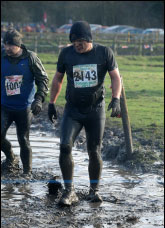by Fern Shaw | Jul 18, 2013 | Health and Hydration
It seems strange that water should be such a scarce resource when our planet is drenched in 326 million trillion gallons of the stuff. But it turns out that less than one-half of 1 percent of it is drinkable. Out of the rest, 98 percent is oceanic salt water and 1.5 percent remains locked up in icecaps and glaciers.
Between droughts, natural disasters and the large-scale redistribution of moisture threatened by climate change, the need for new sources of potable water grows with each passing day. Each year, the global population swells by another 85 million people, but worldwide demand for freshwater increases at twice the rate of population growth, doubling every 20 years or so. Throughout the world, our most vital resource is under stress from pollution, dam construction, wetland and riparian (meaning of, relating to, or situated on the banks of a river), ecosystem destruction, and depletion of groundwater aquifers, with poor and marginalised populations getting the worst of it.
So why can’t we convert seawater into drinking water? Actually, we can and we do. In fact, people have been making seawater drinkable at least as far back as the ancient Greeks. But when taken to the scale of cities, states and nations, purifying seawater has historically proven prohibitively expensive, especially when compared to tapping regional and local sources of freshwater. However, as advancing technology continues to drive costs down and freshwater continues to grow scarcer and more expensive, more cities are looking to seawater conversion as a way to meet this vital demand.
How and where is desalination used today?
Desalination has come a long way in the 2,400 years or so since people boiled salt water and collected the steam in sponges. Yet, the most widely used method is still based on the same principle: distillation. Essentially, distillation artificially mimics what occurs in nature: Heated water evaporates to become water vapour, leaving salts and impurities behind, and then condenses as it cools to fall as freshwater (aka rain). Distillation plants refine and speed up this process by applying artificial heating and cooling and by evaporating water under lower air and vapour pressure, which significantly reduces its boiling point. This method requires a great deal of energy, however, so distillation plants are often located alongside power plants, where waste heat is available to bring the water up to a volatile temperature.
Another method, reverse osmosis (RO) desalination, uses pressure to force water through filters, straining out other substances at the molecular level. Developed in the 1960s, the process became feasible on a commercial scale in the 1970s, ultimately replacing distillation as the method used in most new desalination facilities, in part because it requires less energy. Besides removing salt, both methods remove virtually every mineral and most biological or organic chemical compounds, producing water that is safe to drink.
As much as desalination has increased over the years, it is still just a drop in the bucket.
Of course, you lucky fish don’t need to resort to these rather extreme applications – all you need to do is visit us here , drop us an e-mail and no sponges, boilers (we have those too by the by) necessary; just a range of water coolers tailor-made to suit your requirements. We’ll be happy to guide you in the right choice of water cooler solutions using our oodles of experience.
So, really, step away from that manky sponge and make use of our expertise.
Excerpts from https://science.howstuffworks.com/environmental/earth/oceanography/desalination.htm
by Fern Shaw | May 3, 2013 | Health and Hydration, Water Boilers
What is the difference between sunburn, sunstroke and heat exhaustion?
In a previous blog, I rather optimistically spoke about Spring being on the horizon, the grass rising … so now I may as well stretch that optimism further (boiiiinnnggg-ing) by casting my foresight towards the prospect of Summer and the Summer ‘oliday.
Summer breaks can be the make or … break between one maintaining one’s sanity in the workplace instead of plotting the demise of an annoying colleague around the water cooler, but before you pack in either your Borat costume or your dental floss bikini as the only necessity that you’ll need on the beach at Olu Deniz, have a squizz through this blog and understand that sun, sea and holiday could very easily end up being sun, burning to a crisp and coming home in an air ambulance.
Sunburn is caused by overexposure to UV rays, characterized by sore, red skin that can become itchy and even blister, if it’s severe enough. It can also be accompanied by fatigue and mild dizziness. Remember – even if you call your burn a tan, the fact of the matter is, tanning your skin only happens as a result of your skin being damaged.
Heat exhaustion is the result of exposure to very hot weather and signs can include fatigue, dizziness, headache, rapid pulse and breathing and muscle cramps. It can also lead to sunstroke – which can be fatal.
Sunstroke or heatstroke is caused by long-term exposure to very high temperatures, or dehydration. It can also come about if the body’s internal mechanism for regulating temperature is inadequate.
When does heat exhaustion become sunstroke?
Symptoms of sunstroke include:
- Not sweating (a sign your body is no longer capable of regulating your internal temperature).
- Skin that feels hot and flushed
- Fever
- Confusion
- Loss of consciousness
Why does this happen? Exposure to extreme temperatures can shut down your body’s capacity to keep you cool through sweating. This could lead to major organ failure, shock and unconsciousness.
Dehydration can exacerbate sunstroke.
We’ve said it before, but we’ll say it again: water is your friend. Drink at least eight glasses a day and even more in hot weather and when you’re exercising.
Now, obviously, as you head off to soak up the sun, it’s highly unlikely that you’ll be able to pack in work’s water cooler – a) the work drones left behind may have a slight issue with this, b) the boss may lay theft charges against you and c) it’s rather unlikely that the airline will accept the water cooler as additional baggage no matter how you dress it up as a ‘can’t-leave-home-without-it’ item. So, in order to keep your cool (both temperature and vibe wise) this Summer, say it one more time with me:
Water is your friend. Drink at least eight glasses a day and even more in hot weather and when you’re exercising.
Happy ‘olidays.
by Fern Shaw | Apr 11, 2013 | Health and Hydration, Water Coolers
… Rain (blizzards, snow, and sub-zero temperatures) or Shine (weak lemony coloured sun that wouldn’t tan a meringue) you begin to notice that your staff is a tad dispirited, if not outrightly unproductive. No spring in their step, no whistle in their walk.
So, at great cost, you institute an Independent Board of Enquiry to establish the cause of this general malaise that’s affecting everyone from Mrs Tibbins, usually the whizz bang accountant, through to Mr Oogle, usually the zoomiest bike messenger ever (but sadly not for the past few months.)
While all of this is in motion, the meeker than the proverbial mouse IT person, Tad, squeaks up.
‘We’ve no water in the water coolers’, says Tad, ‘so everybody’s most likely dehydrated’.
‘What?’ splutters HOD Mrs Furthingstoke, ‘what does that have to do with everyone not performing at their peak? Pure poppycock, I’m sure!’
‘Incorrect’, corrects Tad, ‘not drinking water regularly is one of the leading causes of many illnesses and especially fatigue’.
As it turns out, Tad was proven correct. The Board of Enquiry was dismissed, the water coolers were kept replenished, productivity soared and absenteeism dropped rapidly.
Take it from Tad, dehydration can happen sooner than one thinks. Some early warning signs are:
- Light-headedness, dizziness;
- Tiredness, irritability, headache;
- Dry mouth, throat and eyes;
- Sunken features (particularly the eyes), flushed skin and skin that is loose and lacks elasticity;
- Heat intolerance;
- There may be a burning sensation in the stomach, urine output will be reduced and may appear darker than usual.
So, in the interests of having a healthy, happy, productive work environment, take the simplest route – ensure that there is always fresh, clean drinking water from source, available at the press of a button, in the workplace.
by Fern Shaw | Feb 27, 2013 | Water Coolers
As you may well know, an integral part of AquAid’s professional ethos has always been to work smart; be kind to our environment (from whence we draw our sustenance in so many ways) and be charitable with a knock-on effect by involving ourselves in sustainable projects globally, choosing projects that allow people to empower and help themselves long after water pumps have been installed and wells built.
Purchases of AquAid’s range of water coolers, water boilers, in cup drinks and water fountains has generated donations for January 2013 as follows:
£6,735 to Christian Aid
and
£50,492 to The Africa Trust
In 2012, a total of £88,600 was donated to Christian Aid and £688,000 to The Africa Trust.
The Africa Trust works to bring sustainable solutions to poverty in Africa. This includes establishing sustainable supplies of clean productive water and decent sanitation. Income generating projects are used to pay school fees, improve clinics and generate the funds needed to run orphanages.
Wealth creation is an important objective, with business skills training helping school leavers and villagers to start or expand profitable businesses. One of the innovative new projects is growing bananas to pay for school fees. The banana plantation can only be established once an Elephant Pump or piped water plus a fenced area, have been installed at the school.
More information about the banana growing and other sustainable projects can be found here, paying for school fees with bananas!
We are looking forward to a wonderfully successful 2013 and of course, our previous, current and future successes with our charitable contributions are all because of the relationship we have with you, our valued client.

by Fern Shaw | Feb 22, 2013 | Charity, Water Coolers
As was mentioned in our previous blog, we at AquAid Birmingham maintain great staff retention partly due to our work ethic and partly due to our organisation being staffed by a team of professionals who also care about those other than themselves.
This attitude is spearheaded by Scott Barnbrook, who is the Regional Manager here at AquAid Birmingham.
 Scott has just competed in the www.toughguy.co.uk competition and in doing so, raised in excess of £500 for Birmingham Dog’s Home www.birminghamdogshome.org.uk , further illustrating that it’s not just about a fellow man, but man’s best friend too.
Scott has just competed in the www.toughguy.co.uk competition and in doing so, raised in excess of £500 for Birmingham Dog’s Home www.birminghamdogshome.org.uk , further illustrating that it’s not just about a fellow man, but man’s best friend too.
 AquAid Birmingham believes strongly in optimum service, by ensuring that we effect prompt deliveries. This allows us to maintain multiple key accounts, a few examples being large contracts with many large building sites where they are on lengthy projects building new hospitals and large Tesco’s stores.
AquAid Birmingham believes strongly in optimum service, by ensuring that we effect prompt deliveries. This allows us to maintain multiple key accounts, a few examples being large contracts with many large building sites where they are on lengthy projects building new hospitals and large Tesco’s stores.
AquAid Birmingham’s efficient and knowledgeable account managers and sales team are available for anyone requiring water cooler; water boiler or drinks solutions for their school, organisation or company.
Please feel free to fill out the form below to have one of the team contact you. We’ll be delighted to assist you


 Scott has just competed in the
Scott has just competed in the  AquAid Birmingham
AquAid Birmingham